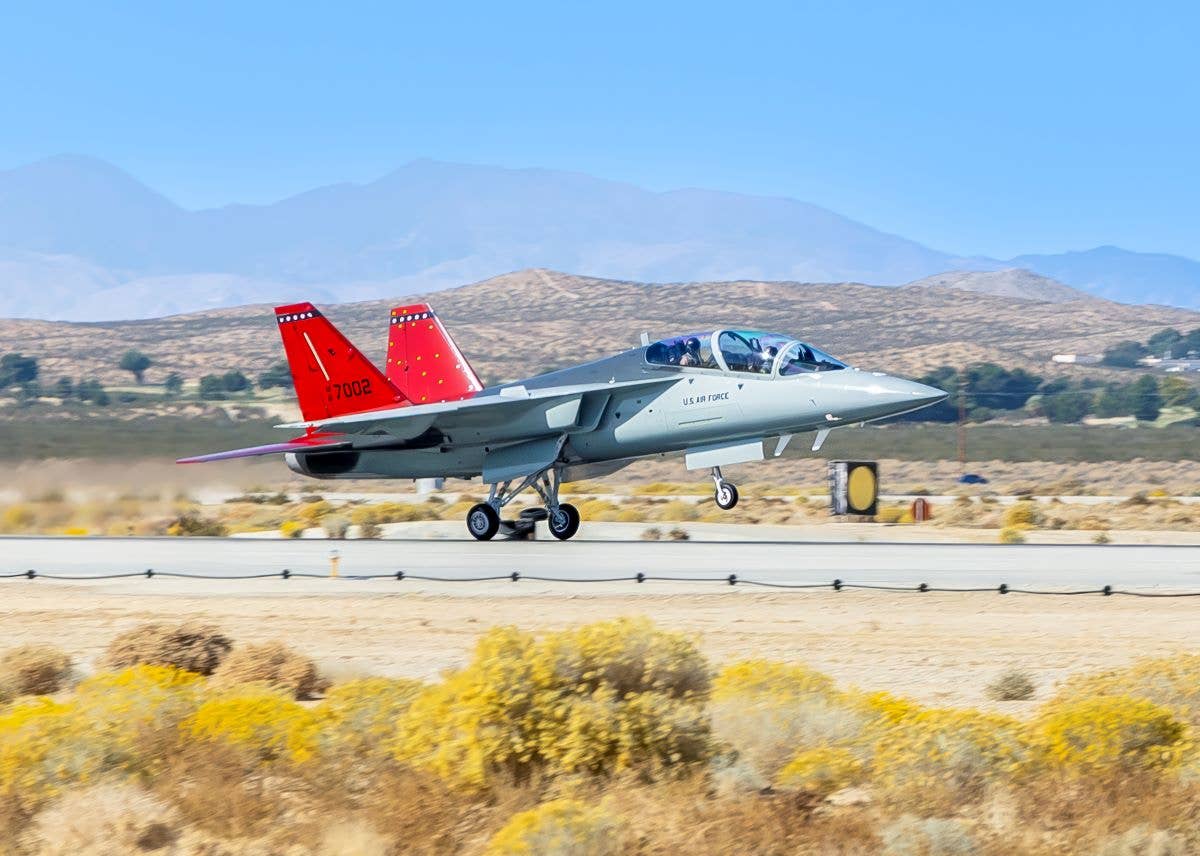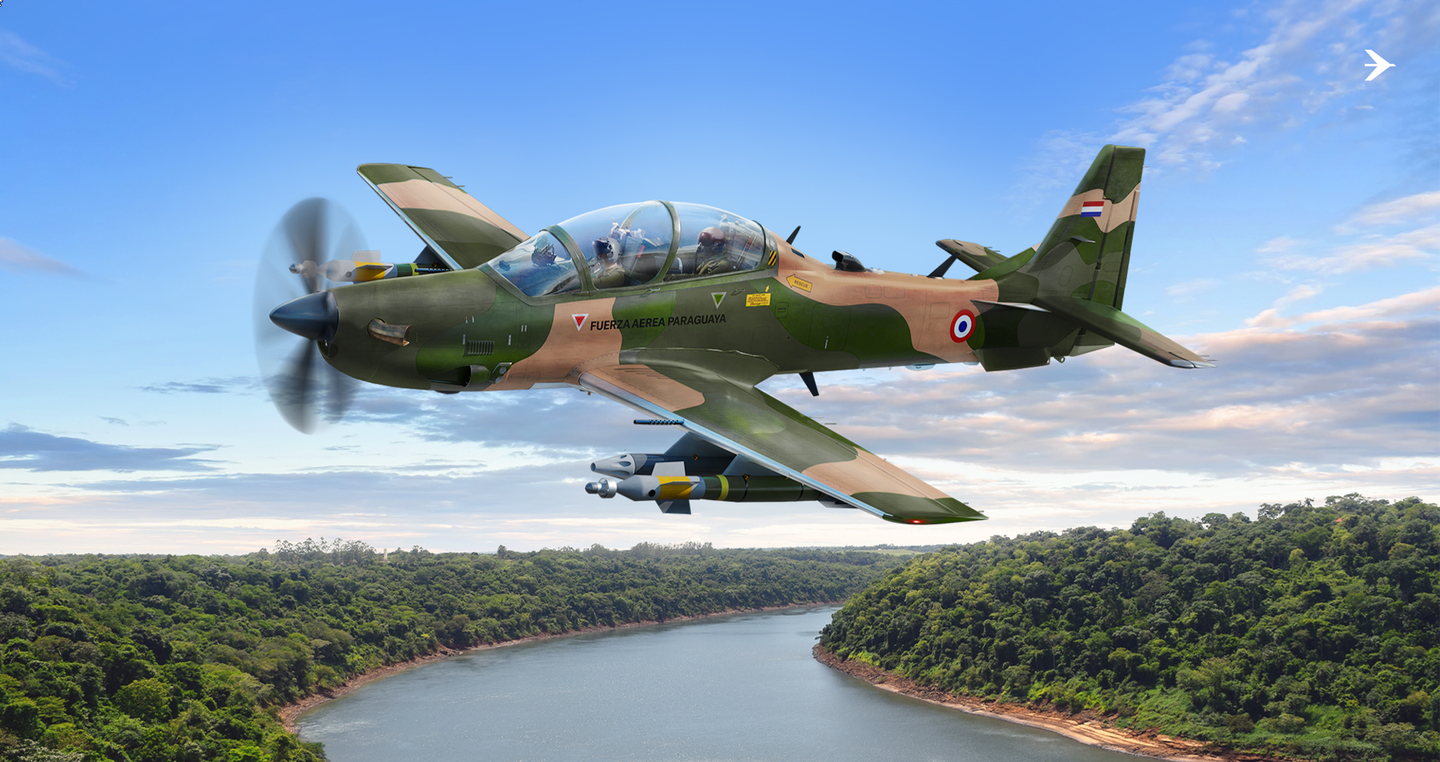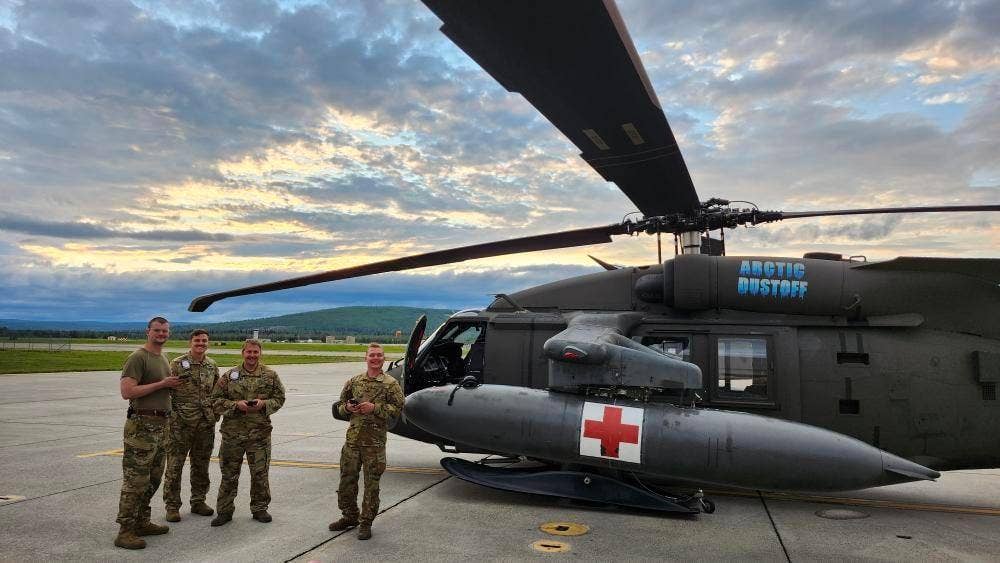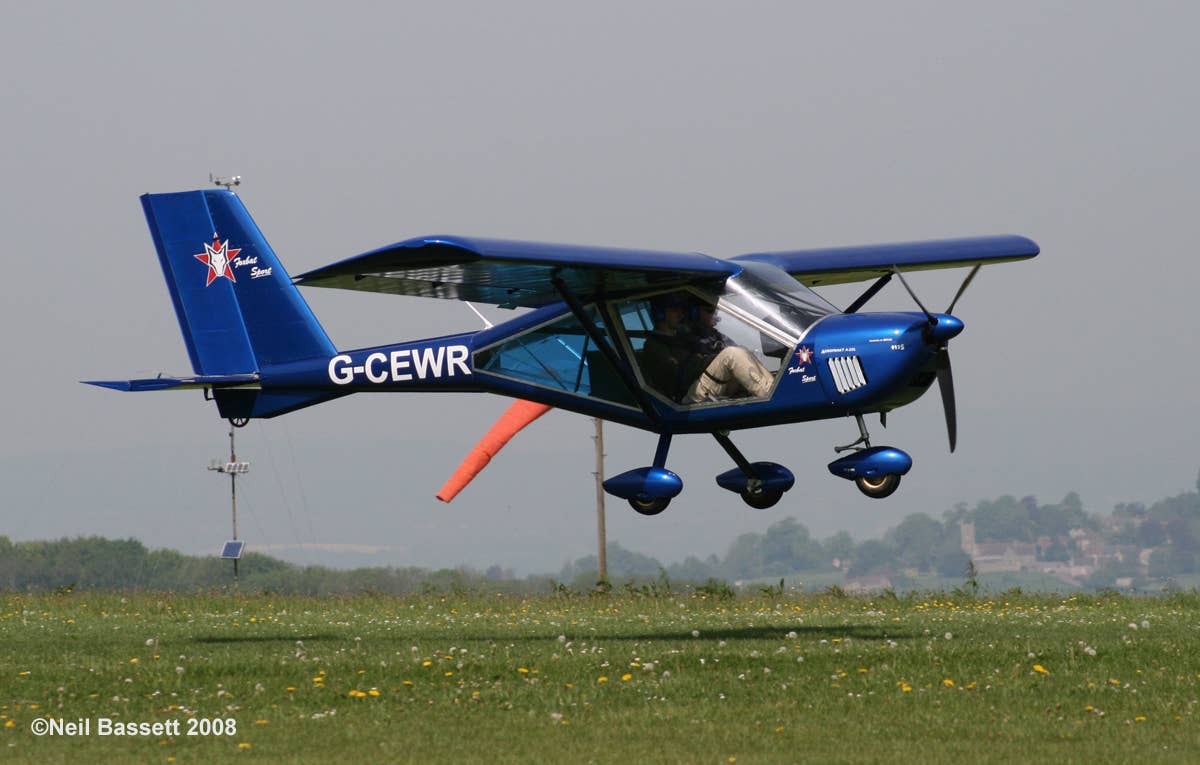Air Force’s T-7 Red Hawk Undergoes New Round of Testing
Trials at a climatic lab will verify system functionality during operations conducted in extreme temperatures.

The first T-7A Red Hawk arrives at Edwards Air Force Base, California, on November 8. [Courtesy: U.S. Air Force]
The U.S. Air Force's new Boeing T-7A Red Hawk trainer is undergoing climate chamber testing in Florida, the service announced Tuesday.
A series of testing is underway at the McKinley Climatic Lab at Eglin Air Force Base, Florida, to verify T-7A system functionality during periods of extreme temperatures. During the tests, performance of the T-7's propulsion, hydraulic, fuel, electrical, secondary power, and overall operations will be evaluated in conditions ranging from minus-25 degrees to 100 degrees Fahrenheit.
- READ MORE: First Air Force Pilot Flies T-7A Red Hawk
The Red Hawk is set to replace the 1960s-era T-38 trainer for Air Force fighter and bomber pilot flight training. Its iconic red-tail livery honors the Tuskegee Airmen of World War II, the U.S. Army Air Forces’ first Black aviation unit.
Last month, the advanced trainer made its first cross-country flight to Edwards Air Force Base in California for flight testing.
“The Red Hawk must withstand a range of environments from sitting on the ground in the Texas heat to flying at altitude,” Troy Hoeger, Air Force Life Cycle Management Center’s T-7A chief developmental tester, said in a statement. “The climatic lab helps us do this in a deliberate and methodical way and will give us confidence that our new aircraft meets requirements.”
The $9.2 billion Air Force program includes the purchase of 351 Boeing T-7A jets, 46 simulators, and support.

Subscribe to Our Newsletter
Get the latest FLYING stories delivered directly to your inbox






